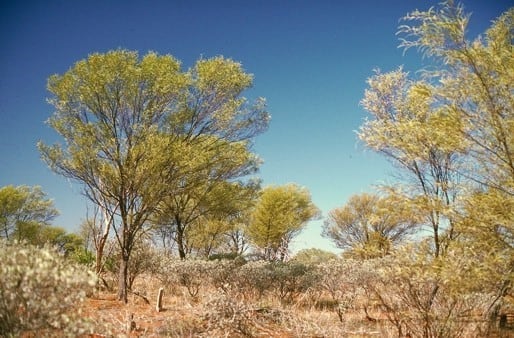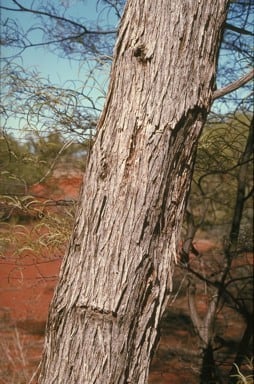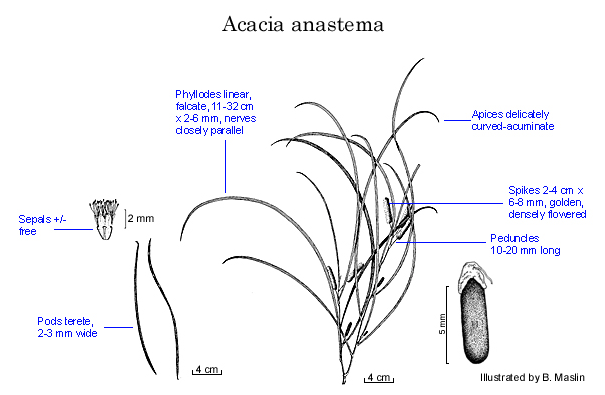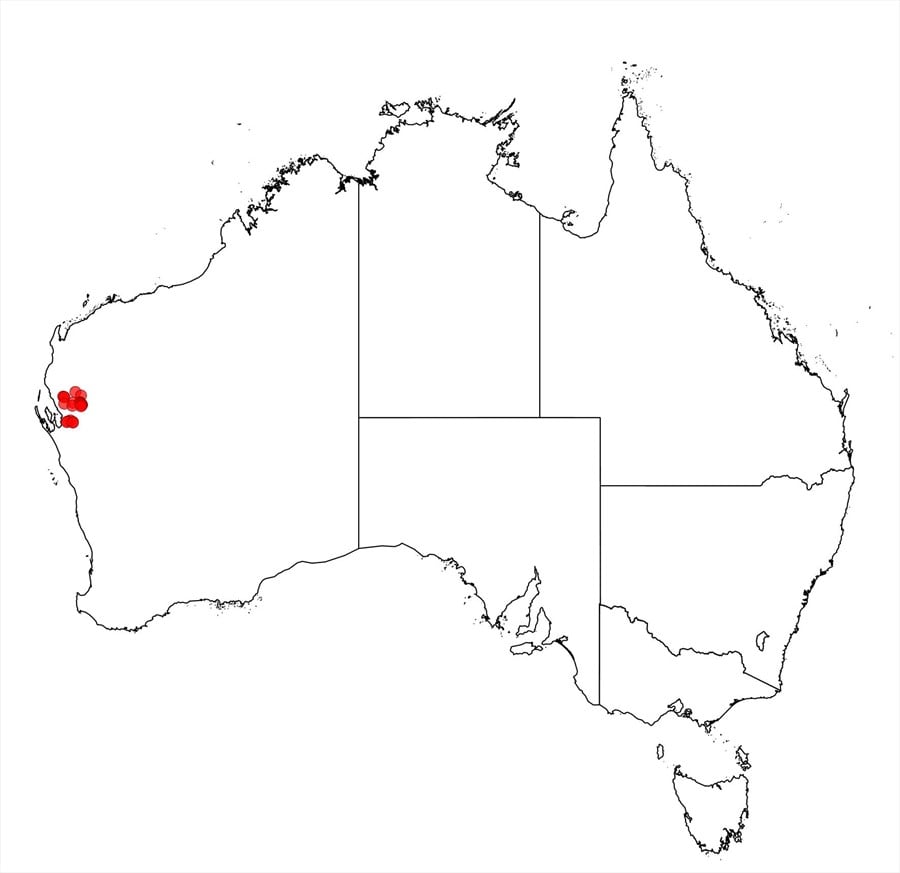Acacia anastema Maslin
WATTLE
Acacias of Australia
Family
Fabaceae
Distribution
Occurs on Yabalgo Plain, between Woodleigh Stn and Ellavalla Stn, southern Carnarvon Botanical District, W.A.
Description
Tree to 6 m high, obconical, ±resinous, with 1–3 trunks. Juvenile plants sometimes conifer-like. Bark longitudinally fissured on trunks, smooth on branches, grey. Branchlets terete, hoary towards apices. Young shoots pale citron-sericeous. Phyllodes linear, flat, curved, 11–32 cm long, 2–6 mm wide, finely acuminate, coriaceous, hoary when young (later only between nerves), finely multistriate, sometimes 3 nerves more prominent; gland obscure, basal. Peduncles 10–20 mm long, resinous-strigillose. Spikes single, axillary, 2–4 cm long, 6–8 mm wide, dense, golden. Flowers 5-merous; sepals ±free, sparsely ciliolate. Pods linear-terete, to 14 cm long, 2–3 mm wide, slightly chartaceous to ±crustaceous, glabrous to sparsely hoary. Seeds longitudinal, 5–5.5 mm long, grey-brown or brown.
Tree to 6 m high, obconical, ±resinous, with 1–3 trunks. Juvenile plants sometimes conifer-like. Bark longitudinally fissured on trunks, smooth on branches, grey. Branchlets terete, hoary towards apices. Young shoots pale citron-sericeous. Phyllodes linear, flat, curved, 11–32 cm long, 2–6 mm wide, finely acuminate, coriaceous, hoary when young (later only between nerves), finely multistriate, sometimes 3 nerves more prominent; gland obscure, basal. Peduncles 10–20 mm long, resinous-strigillose. Spikes single, axillary, 2–4 cm long, 6–8 mm wide, dense, golden. Flowers 5-merous; sepals ±free, sparsely ciliolate. Pods linear-terete, to 14 cm long, 2–3 mm wide, slightly chartaceous to ±crustaceous, glabrous to sparsely hoary. Seeds longitudinal, 5–5.5 mm long, grey-brown or brown.
Phenology
Flowers late July–Sept. Fruits late Nov.
Habitat
Grows on red sand dunes, often in pure stands.
Specimens
W.A.: 29.3 miles [47 km] S of Gascoyne Junction, A.M.Ashby 4610 (AD, CANB, PERTH).
Notes
Acacia anastema is a member of the ‘A. doratoxylon group’, being closely allied to A. lasiocalyx which is distinguished by its broad, flat pods to 5 mm wide and calyces with united sepals.
FOA Reference
Data derived from Flora of Australia Volumes 11A (2001), 11B (2001) and 12 (1998), products of ABRS, ©Commonwealth of Australia
Author
Dr M.D.Tindale and Dr P.G.Kodela with the assistance of M.Bedward, S.J.Davies, C.Herscovitch, D.A.Keith and/or D.A.Morrison
This identification key and fact sheets are available as a mobile application:
URL: https://apps.lucidcentral.org/wattle/
© Copyright 2018. All rights reserved.











